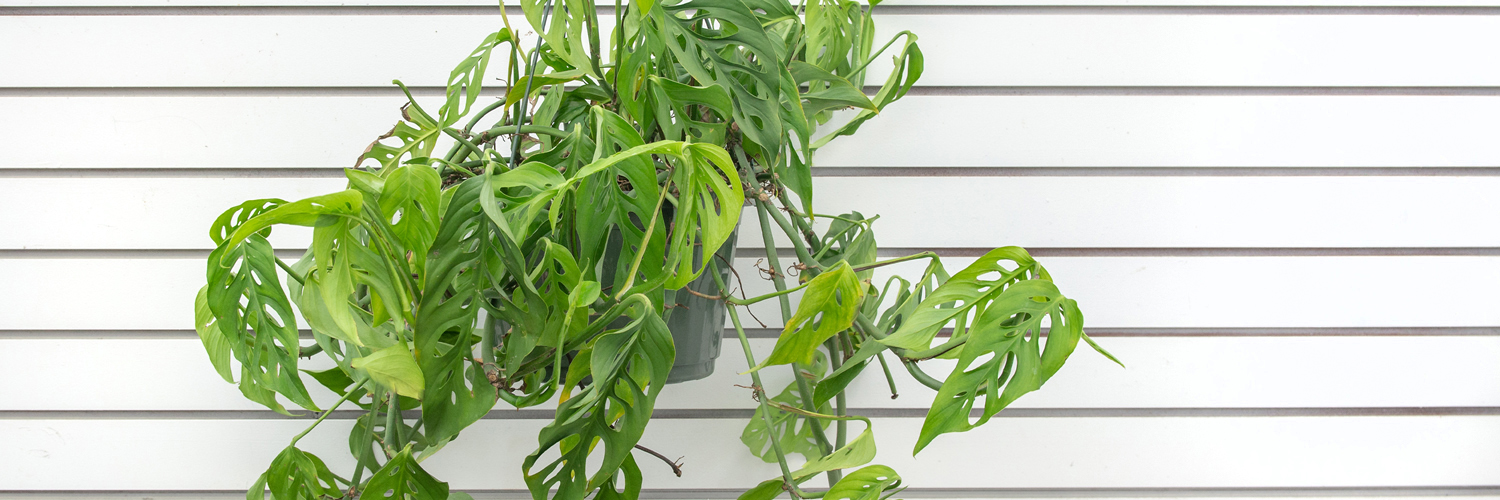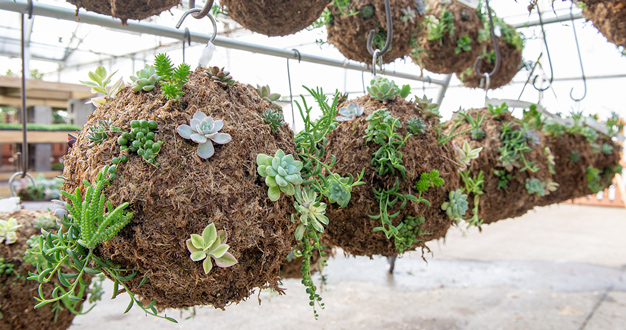
To fully appreciate the unique beauty of some of our favorite vining or trailing houseplants, we need to lift them off the table and let all that tumbling foliage spill free over the side of a hanging pot. Here, we share some of the ways going vertical with hanging houseplants can make your collection even more enjoyable. And, if you’re thinking of adding a new hanging beauty to your own group, we take a look at a few of our favorites – along with some care tips too.
Hanging Plants Make a Happy Home
Displaying houseplants in hanging containers has several advantages for plant parents – and their plants. A hanging display brings that beautiful foliage up to eye level where we can appreciate the structure, color, and texture. As a decorative element, a hanging plant can soften the look of furniture lines and angles, create a kind of living curtain in a window, or define separate spaces within a room too.
For the plants, living up in the air gives light-loving varieties a better view of the sky, increases healthy air circulation around the foliage, and provides protection from curious pets. And if the shelves and tables around your best windows are at full plant capacity, going vertical frees up those horizontal spaces for other uses – or better yet, for more plants. For avid collectors, that may be the best benefit of all.
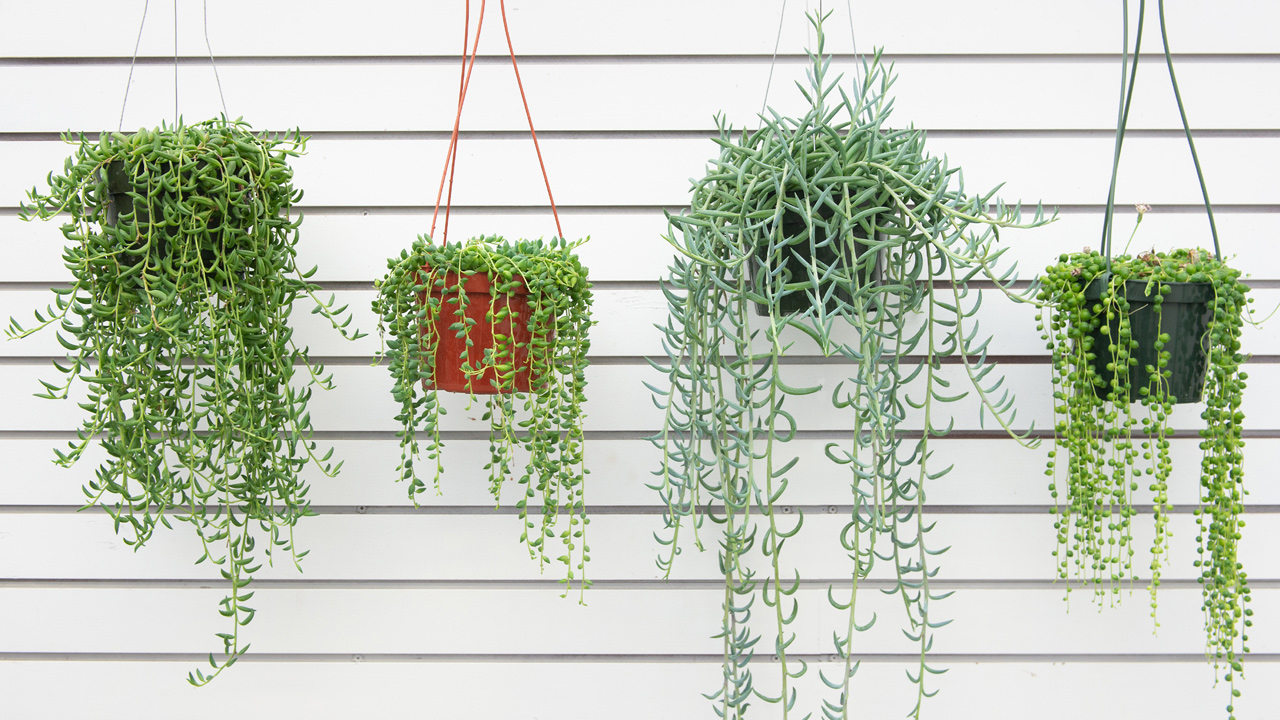
The “String of” Crew
Senecio radicans (bananas), Senecio herreianus (beads), Senecio radicans (fishhooks), and Senecio rowleyanus (pearls)
Some of the most intriguing hanging plants belong to the genus Senecio. These fascinating beauties are commonly named for their trailing, slender stems and the shape of their unusual foliage – like string of pearls, string of fishhooks, string of beads, and string of bananas. Like most succulents, this group likes about as much light as they can get indoors plus the chance to dry out somewhat between waterings.
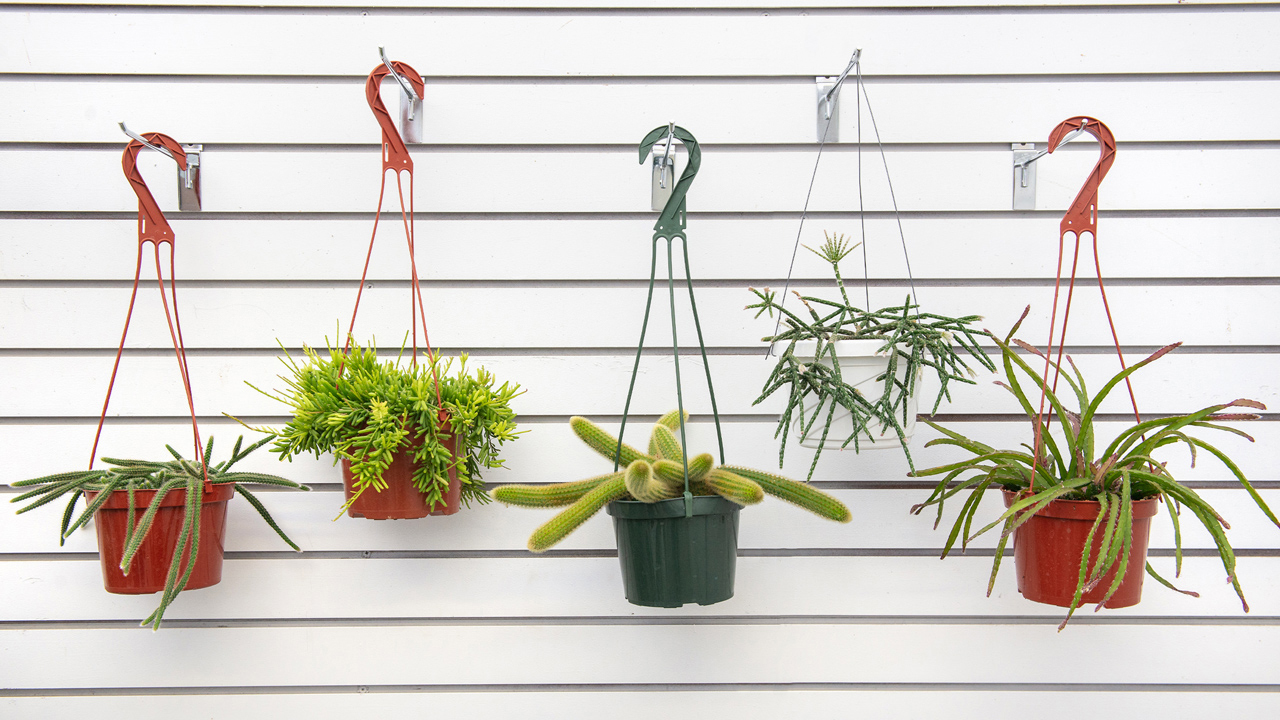
Hanging Cacti
Apopocactus flagelliformis, Hatiora salicornioides, Discocactus flagelliformis, Rhipsalis pilocarpa, and Lepismium spp.
Another favorite group includes a few bizarre species of cactus in the genera Rhipsalis, Lepismium, Discocactus, Apopocactus, and Hatiora. Common names in this group include “rattail,” “dancing bones,” and “hairy-fruited wickerware” – appropriate descriptions of their oddly linear and angular configurations. Each is a captivating addition to any diverse plant collection. Being cacti, this group likes a lot of bright – even direct – light, a fast-draining cactus soil, and time to dry out before the next drink.
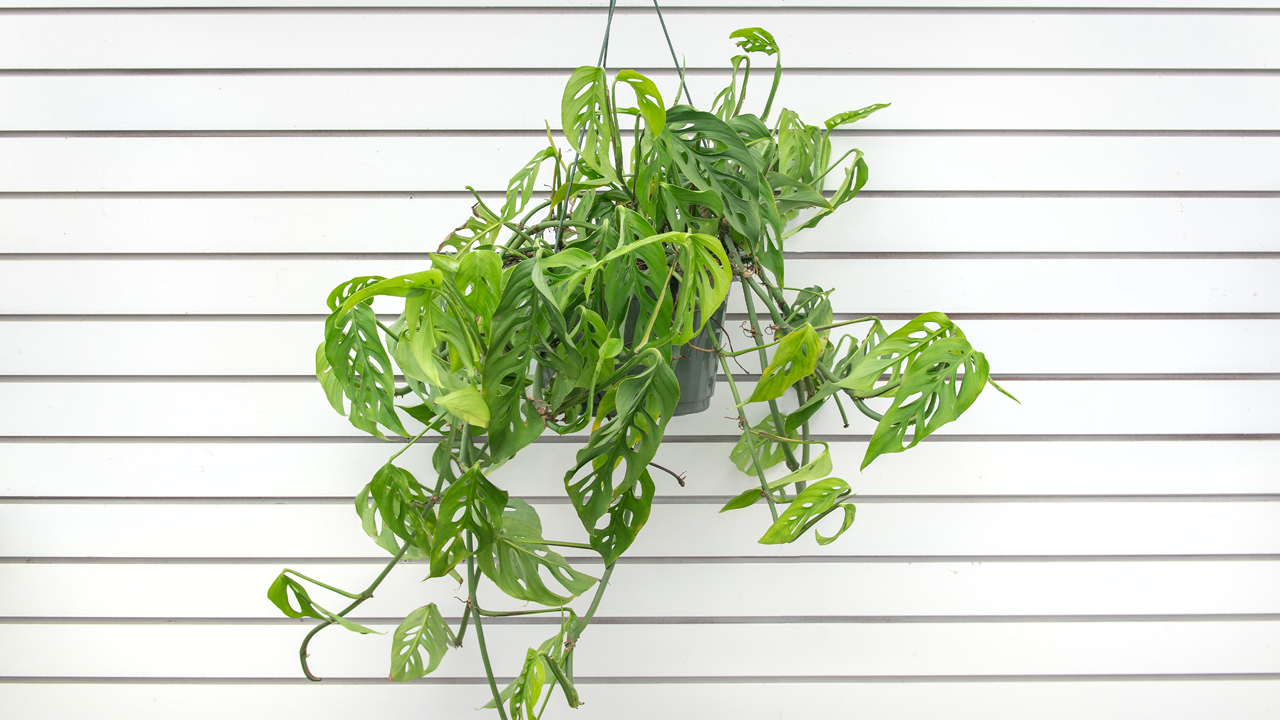
Monstera adansonii
Monstera adansonii has enjoyed a bit of popularity in recent months, and it flies out of the Greenhouse almost as soon as it arrives. It’s a cousin to another favorite, Monstera deliciosa, but M. adansonii is more petite, with more delicate leaves and thinner, twining stems that make it perfect for dangling from hanging containers or high bookshelves. It likes bright, indirect light, well-draining soil, and some extra humidity if you can provide it. A space in the kitchen or bathroom would be ideal, but a humidifier or a pebble tray helps too. Give it a drink when the top inch or so of soil feels dry to the touch.
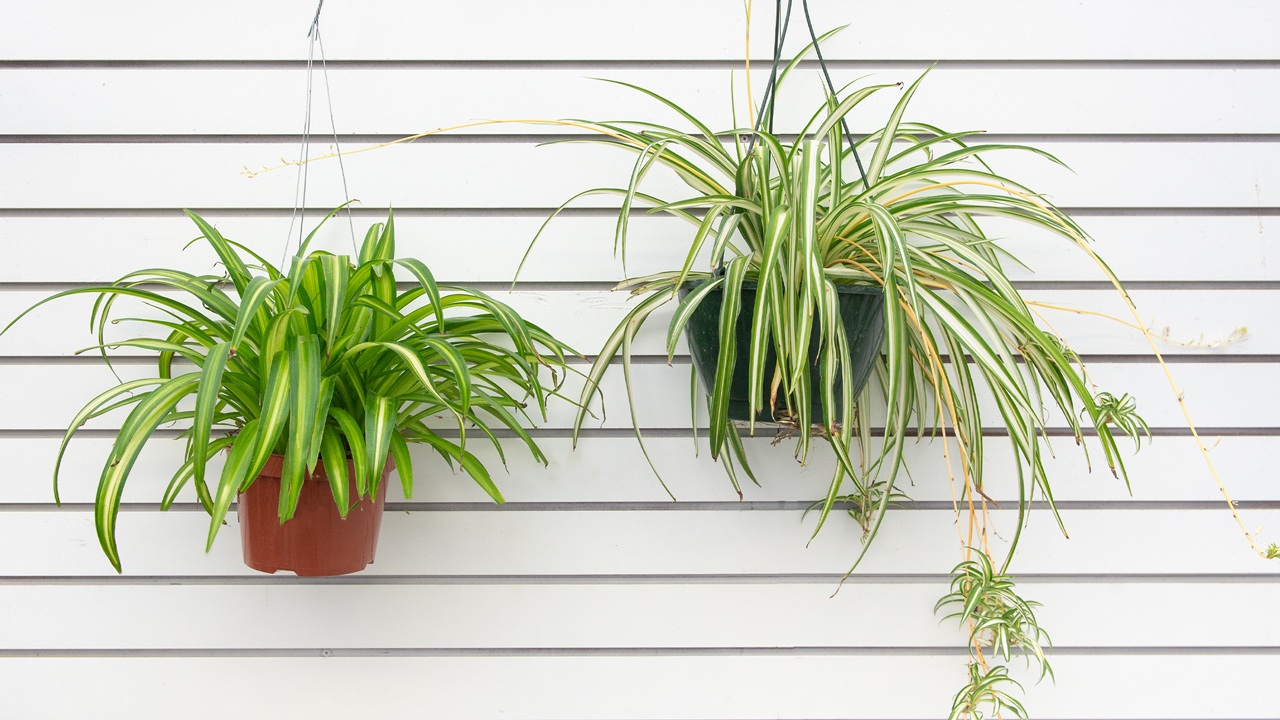
Spider Plant
Chlorophytum comosum ‘Hawaiian’ and ‘Variegatum’
The classic spider plant has loads of gorgeous, narrow leaves that arch up and over the sides of its container. Then, to kick that hanging habit into high gear, it throws out dozens of babies on long, thin stems. All that activity plus a choice of different variegation patterns make spider plant a fascinating one to bring home. Spider plant likes bright, indirect light plus a well-draining soil that dries just a little at the top between drinks.
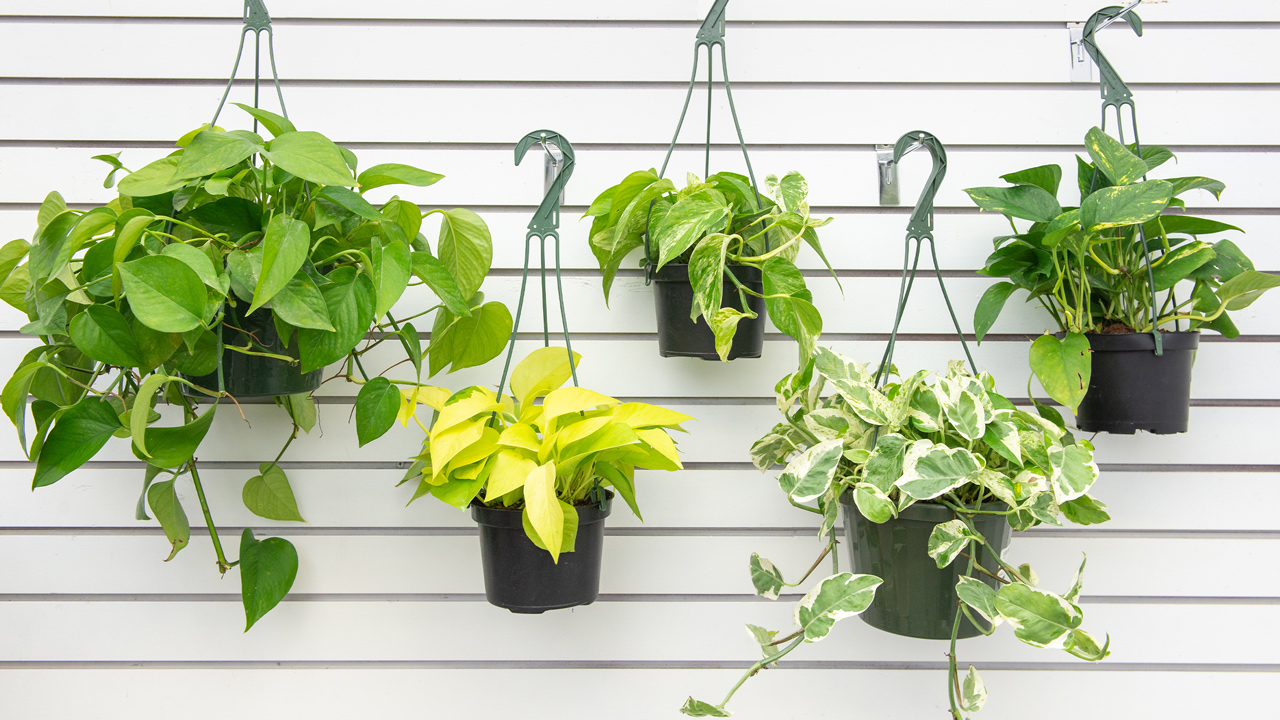
Pothos
Epipremnum aureum ‘Jade,’ ‘Neon’, ‘Marble Queen’, ‘Pearls and Jade’, and ‘Golden’
The classic pothos finds its way into everyone’s collection – and for good reason. New plant parents and experienced collectors love this plant’s glossy, spade-shaped foliage, easy-care personality, and wide variety of colors and variegations. And it’s easy to propagate too. Pothos looks great anywhere – tumbling from a hanging pot, dangling over the side of a mantel, or crawling along the top of a bookshelf. It’s forgiving under low light and less-than-perfect care, but thrives with bright, indirect light and a drink when the top of the soil dries out.
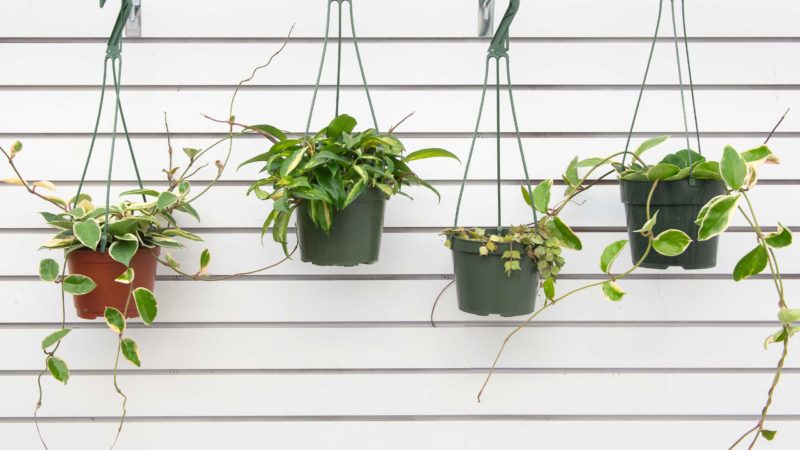
Hoya
Hoya carnosa ‘Tricolor’ and Hoya curtisii
Hoyas are a diverse group of addictively collectible trailing houseplants with thick, waxy foliage and an almost endless variety of forms and variegations. Occasionally, hoyas produce fascinating clusters of the most fragrant, porcelain-like blooms too. And hoyas are easy to live with – all they need is lots of bright, indirect light in a place free from cold drafts and the chance to dry out pretty well between waterings.
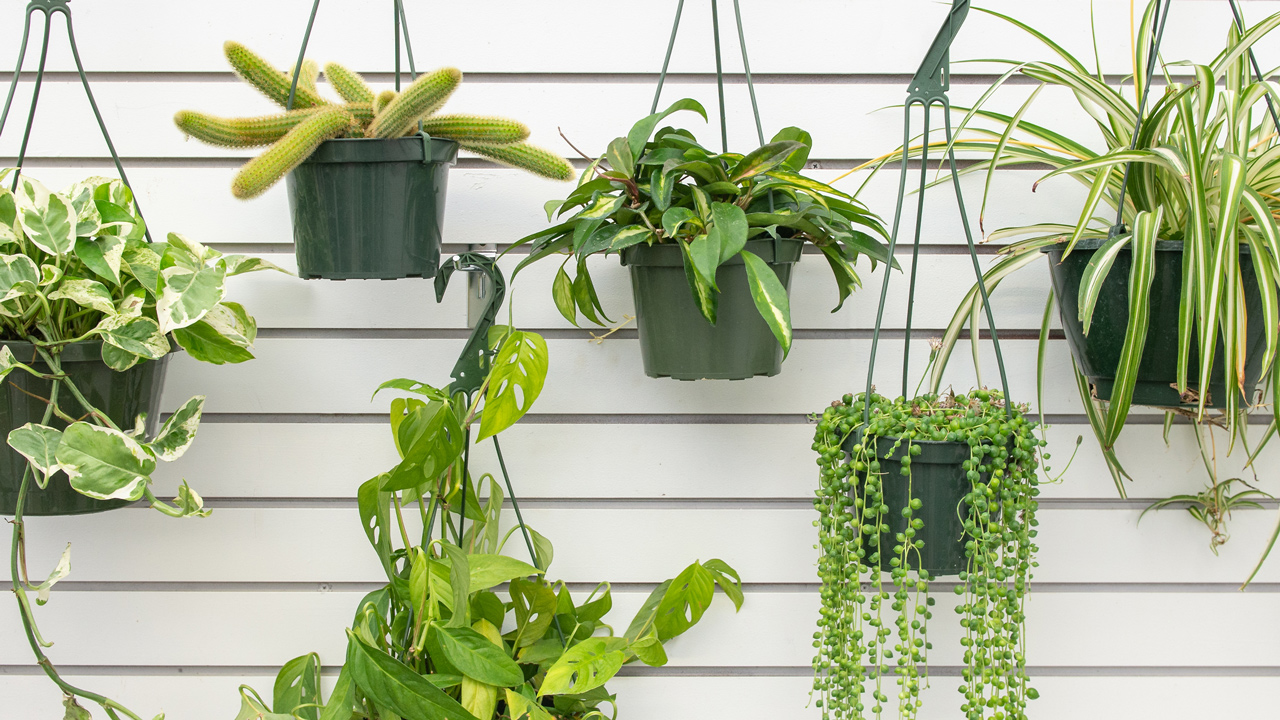
Add a New Layer to Your Plant Collection
Just a few hanging houseplants in your collection can bring a whole new level of interest to your indoor space. If you’re looking for a new plant of your own, come see us in the Greenhouse and meet these hanging beauties – plus even more like pitcher plant, plumosa fern, goldfish plant, and a fun peperomia too. And if you need help finding the perfect one, just ask – we’re always glad to help.

